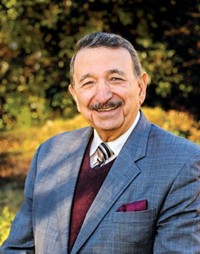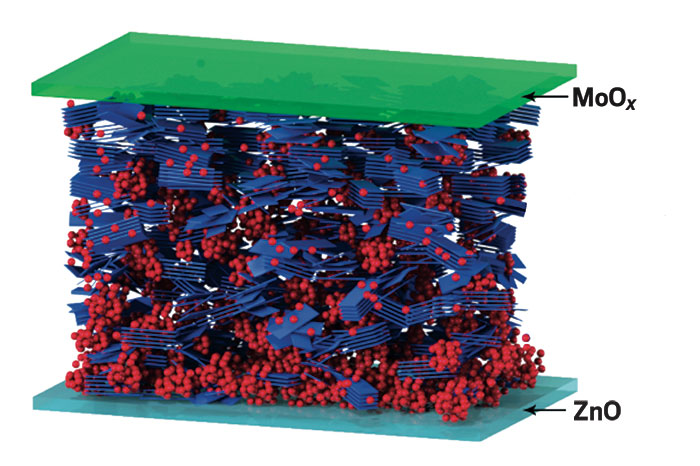Advertisement
Grab your lab coat. Let's get started
Welcome!
Welcome!
Create an account below to get 6 C&EN articles per month, receive newsletters and more - all free.
It seems this is your first time logging in online. Please enter the following information to continue.
As an ACS member you automatically get access to this site. All we need is few more details to create your reading experience.
Not you? Sign in with a different account.
Not you? Sign in with a different account.
ERROR 1
ERROR 1
ERROR 2
ERROR 2
ERROR 2
ERROR 2
ERROR 2
Password and Confirm password must match.
If you have an ACS member number, please enter it here so we can link this account to your membership. (optional)
ERROR 2
ACS values your privacy. By submitting your information, you are gaining access to C&EN and subscribing to our weekly newsletter. We use the information you provide to make your reading experience better, and we will never sell your data to third party members.
People
Gabor A. Somorjai
‘Father of Modern Surface Chemistry’ Helped To Advance High-Tech Industries
April 7, 2008
| A version of this story appeared in
Volume 86, Issue 14
Introducing Gabor A. Somorjai, 2008 Priestley Medalist
New Orleans, April 8, 2008
Tonight, I have the distinct honor and personal pleasure to introduce a colleague and friend who has had a profound impact on our science.
Professor Gabor Somorjai is known to his peers and colleagues as the “father of modern surface chemistry.”
His manifold contributions have dramatically expanded chemistry’s knowledge base and benefited millions of people worldwide.
His legendary discoveries in surface chemistry and catalysis have given us an in-depth understanding of friction, lubrication, adhesion, and adsorption. This, in turn, has allowed scientists to make tremendous strides in medical research. It has helped us produce better fertilizers for farmers and reduce pollutants from automobile emissions. It has even helped us understand how the reactions on the surfaces of microscopic ice crystals in the stratosphere threaten Earth’s protective ozone layer.
Professor Somorjai’s inquisitive nature laid a foundation of understanding that made possible many of the advances of the world’s high-technology industries. These global industries employ many thousands of people and are key contributors to economic growth here in the United States and around the world.
When Dr. Somorjai first began studying the chemistry of surfaces, there wasn’t much known about them at the molecular level. So he decided to keep it as simple as possible. He started by looking at single, uniform metal crystals and determining how chemical reactions took place on their surfaces. Of course, since the work was so new, he had to develop his own techniques and associated instrumentation in order to study the reactions.
His pioneering efforts led to the use of ultra-high-vacuum techniques for the study of metal surfaces with increased detail and precision.
His ability to combine extremely different experimental techniques to address fundamental questions in chemistry makes him a natural to receive ACS’s highest honor.
We are also celebrating a man who came to the U.S. under dire personal circumstances. Gabor was born in Budapest to Jewish parents just before the onset of World War II. He, his mother, and his sister barely escaped the Nazi death camps in 1944. After the end of the war, he finished high school in Budapest and entered the university. But once again he had to escape oppression—he was just 21 years old when he fled Budapest after the Soviet army invaded to put down the famous Hungarian Revolution of 1956.
He made his way to the U.S. and enrolled as a graduate student at the University of California, Berkeley, where he was awarded a Ph.D. in chemistry in 1960.
Today, nearly 50 years later, Dr. Somorjai is a faculty senior scientist and director of the Surface Science & Catalysis Program in the Materials Sciences Division of the Lawrence Berkeley National Laboratory. He also is a University Professor and professor of chemistry at UC Berkeley.
And just last year, he and his lovely wife, Judy, celebrated their golden wedding anniversary.
Professor Somorjai’s c.v. is, to put it mildly, breathtaking. He has published nearly 1,000 papers on surface science, heterogeneous catalysis, and solid-state chemistry, and he has authored three textbooks.
He has been a mentor and teacher to several hundred Ph.D. students and postdocs.
In addition to ACS, Dr. Somorjai is a member of the American Academy of Arts & Sciences and the National Academy of Sciences, and he is a Fellow of the American Physical Society and the American Association for the Advancement of Science. In 1998, he shared the Wolf Foundation Prize in Chemistry.
In 2002, President George W. Bush presented Dr. Somorjai with the National Medal of Science, America’s highest award for scientific achievement.
In addition to many other national and international awards, Dr. Somorjai also has received several prestigious awards from the American Chemical Society. These include the ACS Award for Creative Research in Homogeneous or Heterogeneous Catalysis, the Adamson Award in Surface Chemistry, the Peter Debye Award in Physical Chemistry, and the Colloid & Surface Chemistry Award.
He even has an ACS award named for him: the Gabor A. Somorjai Award for Creative Research in Catalysis, which we presented earlier this evening to Dr. Avelino Corma Canós of Spain’s Instituto de Tecnología Química.
Tonight, it gives me extreme pleasure to present the American Chemical Society’s highest award, the Priestley Medal, to Professor Gabor Somorjai of the University of California, Berkeley, for “extraordinarily creative and original contributions to surface science and catalysis.”





Join the conversation
Contact the reporter
Submit a Letter to the Editor for publication
Engage with us on Twitter